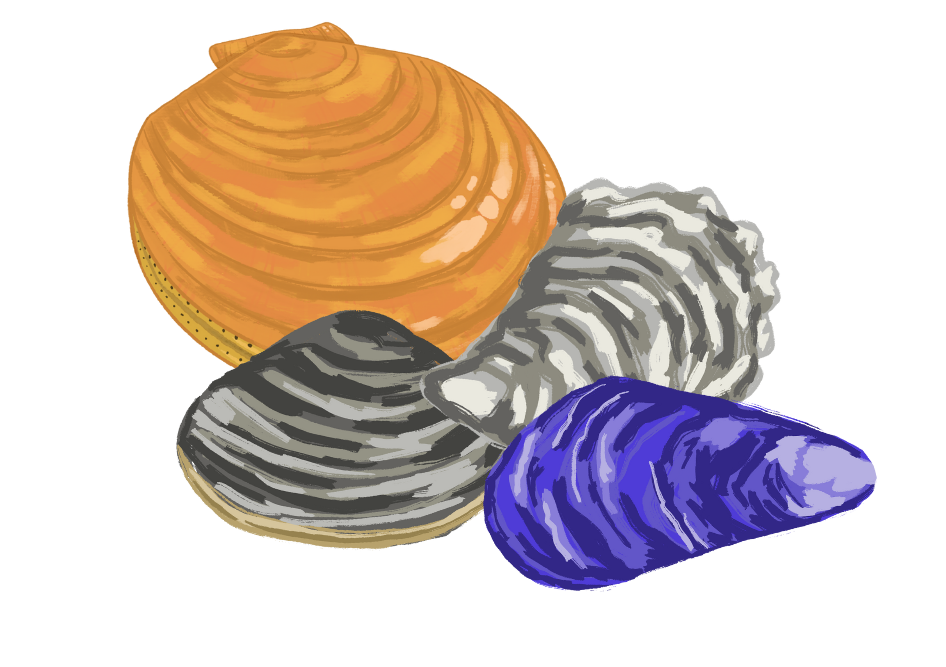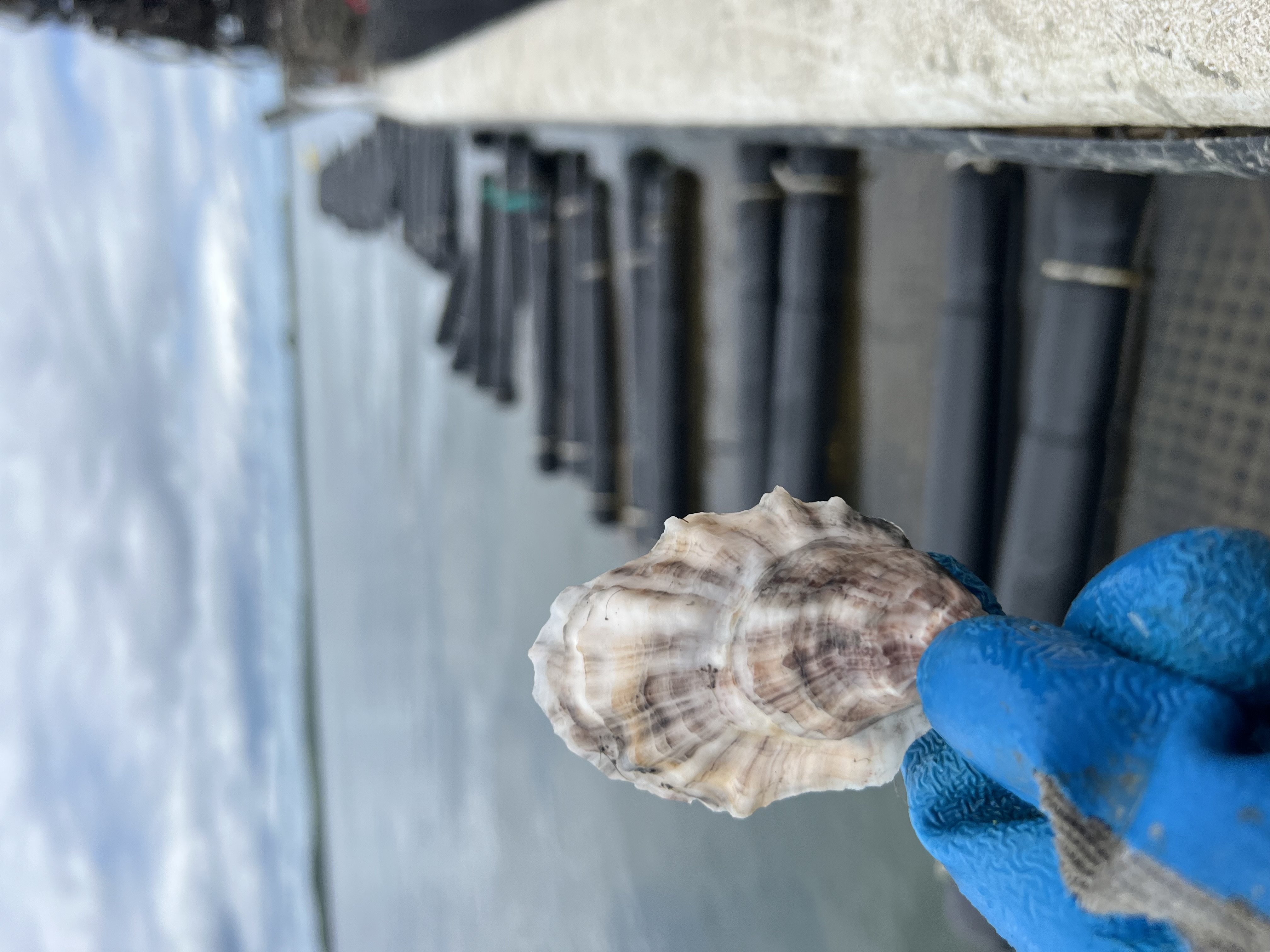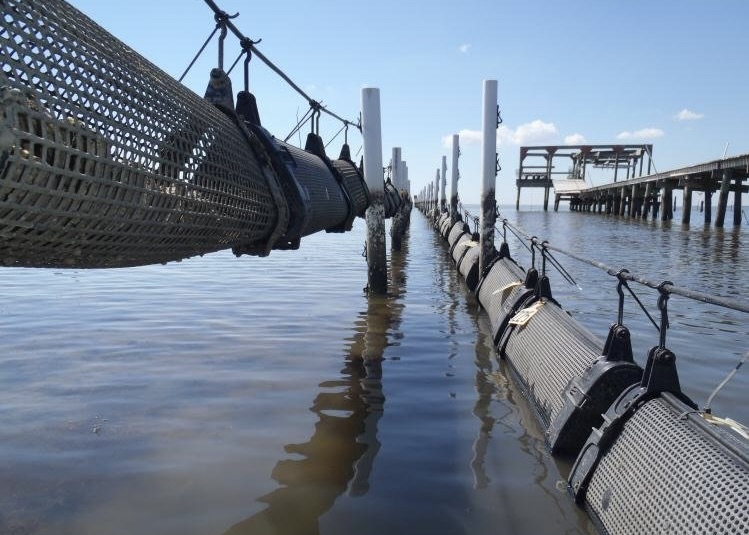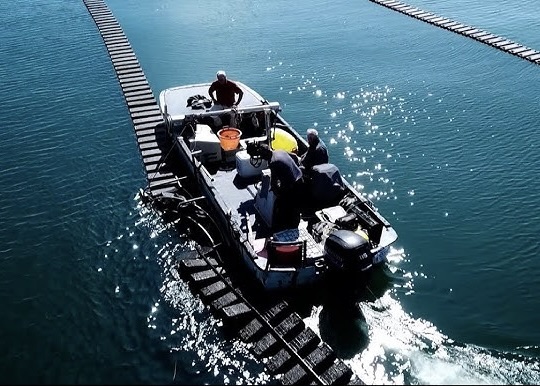"Shell-ebrate!" Maine's K-12 Bivalve Aquaculture Curriculum
About the Bivalve Aquaculture Curriculum
In Maine, when we talk about aquaculture we often end up talking about bivalves. Whether it is oysters, mussels, scallops, or clams, bivalve aquaculture is central to Maine’s farmed seafood industry. To build a basis for understanding how we farm these different organisms, it is important to understand their biology. What environment do they live in? What do they eat? How do they reproduce and when? In this curriculum, we cover these questions as we “crack the shell” on bivalve aquaculture and bring students on a fantastic journey from the hatchery to the table!


Supported by the United States Department of Agriculture- National Institute of Food and Agriculture- Agriculture and Food Research Initiative, project award no. 2024-67037-42603
Unit 1: Dive into Bivalve Aquaculture!
What is a “bivalve,” what bivalves do we farm in Maine, and how do we grow these salty, shelled critters? This unit is a great introductory unit or stand alone resource for exploring the world of bivalve farming with students. Whether you plan to teach the whole curriculum or you would like to spend just a couple of class periods covering the basics, we recommend starting here!
Lesson 1: Introductory Activity
What are bivalves (oysters, mussels, clams, and scallops), and how might we farm them in Maine?
~~~
In this lesson, students will learn what a bivalve is and imagine what a bivalve farm might look like. With no prior knowledge needed, students are encouraged to begin thinking about how “aquaculture” is practiced by drawing and sharing their ideas of a farm. Students then collaborate to discuss what they know, what they have heard, and what they would like to learn about bivalve farming. Finally, students see images of farms and reflect on their thoughts as a group.
Grade: 3-12
Time Frame: 60 minutes
Prerequisites: None
Standards:
ES: 3-PS2-4, 3-LS1-1, 3-LS3-1, 3-LS3-2
MS: MS-LS1-1, MS-LS1-2, MS-LS2-1, MS-ETS1-1, MS-ETS1-2
HS: HS-LS2-1, HS-LS2-7, HS-ETS1-1
Lesson 2: Define Bivalve Aquaculture
What does bivalve farming in look like in Maine?
~~~
In this lesson, students will build their understanding of bivalve aquaculture by learning about a specific form of bivalve aquaculture in Maine: oyster, blue mussel, or sea scallop. Students will then consider how to communicate what they have learned to an audience with no prior knowledge of bivalve aquaculture. Finally, groups will put their creative communication skills to the test by making bivalve farming PSAs!
Grade: 6-12
Time Frame: 60 minutes
Prerequisites: Lesson 1 recommended
Standards:
MS: MS-LS1-1, MS-LS1-2, MS-LS2-1, MS-ETS1-1, MS-ETS1-2
HS: HS-LS2-1, HS-LS2-7, HS-ETS1-1
Lesson 3: Maine Aquaculture Scavenger Hunt
How does bivalve aquaculture fit into the geography of coastal Maine?
~~~
In this lesson, students practice their exploratory skills using digital maps to located different features, farms, and facilities along the Maine coast. Students will have the opportunity to work independently and in groups before contributing to the collective class product, a map of Maine bivalve aquaculture.
Grade: 6-12
Time Frame:
Prerequisites: Lessons 1 & 2 recommended
Standards: Maine Learning Results Social Studies (Geography & Civics), Science & Engineering, Technology & Digital Literacy, NGSS
Video 1: (Coming October 31st!)
This video is an introduction to bivalve farming in Maine. It is associated with lesson 2 of this unit! Designed for 6-12th grade by the Maine Aquaculture Innovation Center.
Unit 2: Bivalve Biology & Anatomy
What parts make up a bivalve and what does this animal’s life cycle look like? In this unit, students learn about the structure and function of different organs in the bivalve’s body before exploring how bivalves grow and reproduce. With this background understanding, students then connect the bivalve’s life cycle with the hatchery process to understand how and why we grow bivalves in a hatchery during their early life stages!
Lesson 1: The Bivalve Blueprint
Coming November 14th!
Lesson 2: What Happens in the Hatchery...
Hatchery lesson coming soon!

Video 2: (Coming November 14th!)
This video is an introduction to bivalve hatcheries in Maine and how the anatomy and life-cycle of bivalves relate to hatchery processes. It is associated with lesson 2 of this unit! Designed for 6-12th grade by the Maine Aquaculture Innovation Center.
Unit 3: Maine’s History of Bivalve Aquaculture
Coming soon!

Unit 4: Bivalve Aquaculture Gear & Farming Systems
How can we grow bivalves in a way that supports the environment while also providing a food resource and good jobs for Mainers? In this unit, students learn about where bivalves grow in the wild, see how habitat and anatomy relate to farm gear, and think creatively about how to design and build their own model gear. Then they test their models to see how they hold up in the water!
Lesson 1: Bin there, Farmed That!
How can we design bivalve farms in a way that supports the environment while also providing a sustinable food resource?
~~~
In this lesson, students will learn about the Maine’s wild intertidal ecosystem. They will then compare wild harvest practices for bivalves with aquaculture practices and learn why it is important for anyone working with bivalves to follow public health regulations. Finally, students will get creative designing and building their own bivalve farms!
Grade: 6-12
Time Frame: 60 to 90 minutes
Prerequisites: Unit 1, Unit 2 required
Standards: NGSS MS-ETS1-1, NGSS MS-Ls2-5, Maine Learning Results – Science & Engineering Practices
A Note for Educators on Safe Bivalve Harvest Practices:
Before beginning this activity in the classroom, we recommend that educators watch the complete LPA Public Health Training Video (~10 minutes) produced by the Maine Department of Marine Resources. It is important that you and your students are aware of the systems in place to make sure bivalves are safe for human consumption. Individuals should not harvest bivalves without a permit or inside a shellfish closure zone, as this can pose serious health risks to consumers. A slide to present key information to students as well as recommened segments of the above public health video are provided in the lesson plan.

Video 4: (Coming late November!)
This video is an introduction to farming various bivalve species in Maine. Designed for 6-12th grade by the Maine Aquaculture Innovation Center.
Unit 5: Bivalves in Marine Ecosystems
Coming soon!

Unit 6: Farming for the Future
Coming soon!

Unit 7: Let’s Eat Bivalves!
Coming soon!
A Note for Educators on Safe Bivalve Harvest Practices:
Before beginning this activity in the classroom, we recommend that educators watch the complete LPA Public Health Training Video (~10 minutes) produced by the Maine Department of Marine Resources. It is important that you and your students are aware of the systems in place to make sure bivalves are safe for human consumption. Individuals should not harvest bivalves without a permit or inside a shellfish closure zone, as this can pose serious health risks to consumers. A slide to present key information to students as well as recommened segments of the above public health video are provided in the lesson plan.

Unit 8: The Business of Bivalve Aquaculture
Coming soon!

Unit 9: Harvest Time! Explore Careers
Coming soon!

